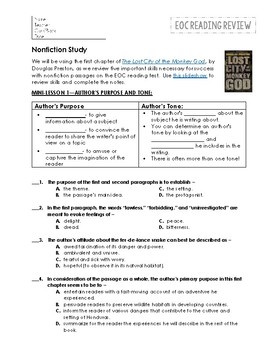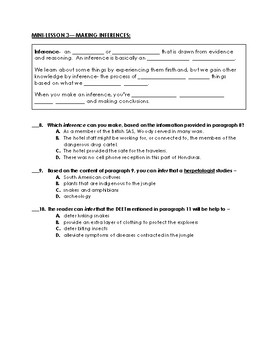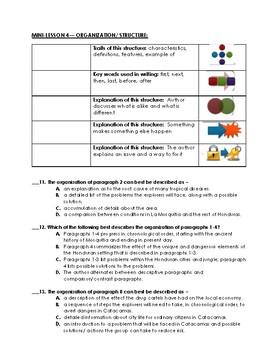Nonfiction Passage Practice for EOC Reading test
Lauren Bruce
15 Followers
Grade Levels
9th - 12th, Higher Education, Adult Education
Subjects
Resource Type
Standards
CCSSCCRA.R.1
CCSSCCRA.R.2
CCSSCCRA.R.4
CCSSCCRA.R.5
CCSSCCRA.L.4
Formats Included
- PDF
Pages
8 page doc, 33 slides
Lauren Bruce
15 Followers
What educators are saying
Great practice as we get ready for our reading SOL. The students always ask for more, so this really helped them. Thank you!
Description
This packet was created to help remediate essential skills to prepare students for success for their end-of-course (11th grade) Reading Test. (I teach in Virginia, and this material was created for use in preparation for SOL testing, but could easily be used for comparable test-prep in other states.)
While I created this mini-lesson specifically for SOL test review, the passage and questions could easily be used for nonfiction reading tests
The PDF contains:
**A link to the passage used-- I used the first chapter of the nonfiction book, The Lost City of the Monkey God, by Douglas Preston. I think this book is fascinating and is worthy of purchasing for your class library. My resource document contains a link to the first chapter of the book, available for free online via an AMAZON preview.
**A link to the Google Slideshow that contains the mini-lessons with practice exercises that accompany the skills.
**23 multiple choice questions, designed for this passage, using SOL stems.
**Answer key.
While I created this mini-lesson specifically for SOL test review, the passage and questions could easily be used for nonfiction reading tests
The PDF contains:
**A link to the passage used-- I used the first chapter of the nonfiction book, The Lost City of the Monkey God, by Douglas Preston. I think this book is fascinating and is worthy of purchasing for your class library. My resource document contains a link to the first chapter of the book, available for free online via an AMAZON preview.
**A link to the Google Slideshow that contains the mini-lessons with practice exercises that accompany the skills.
**23 multiple choice questions, designed for this passage, using SOL stems.
**Answer key.
Total Pages
8 page doc, 33 slides
Answer Key
Included
Teaching Duration
N/A
Report this resource to TPT
Reported resources will be reviewed by our team. Report this resource to let us know if this resource violates TPT’s content guidelines.
Standards
to see state-specific standards (only available in the US).
CCSSCCRA.R.1
Read closely to determine what the text says explicitly and to make logical inferences from it; cite specific textual evidence when writing or speaking to support conclusions drawn from the text.
CCSSCCRA.R.2
Determine central ideas or themes of a text and analyze their development; summarize the key supporting details and ideas.
CCSSCCRA.R.4
Interpret words and phrases as they are used in a text, including determining technical, connotative, and figurative meanings, and analyze how specific word choices shape meaning or tone.
CCSSCCRA.R.5
Analyze the structure of texts, including how specific sentences, paragraphs, and larger portions of the text (e.g., a section, chapter, scene, or stanza) relate to each other and the whole.
CCSSCCRA.L.4
Determine or clarify the meaning of unknown and multiple-meaning words and phrases by using context clues, analyzing meaningful word parts, and consulting general and specialized reference materials, as appropriate.





